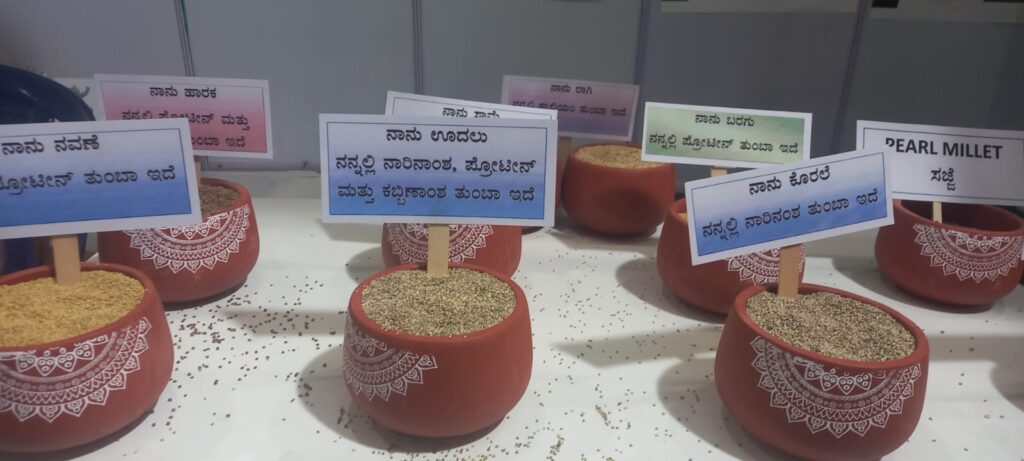
Millet is recommended by nutritionists
and endorsed by doctors
When will you incorporate them?
Hello readers! Today, let’s delve into the diverse world of millets, often referred to as the “small grains with big benefits“.
Millet is a type of cereal that is a part of the grass family Poaceae. Grown primarily in Asia and Africa, India and Nigeria are the homeland of this little, spherical whole grain. Similar to rice, millet can be cooked to facilitate smooth digestion.
There are multiple types of millets. However, most common varieties include Finger Millet, Foxtail Millet, Barnyard Millet, Amaranth Millet, Kodo Millet, Pearl Millet, Proso Millet, Little Millet, Sorghum Millet etc.
In this article, we will explore the importance of millets in India and uncover the numerous ways they contribute to both individual well-being and environmental sustainability.
Cultural Significance: Millets, including varieties such as pearl millet, foxtail millet, kodo, sorghum, and finger millet, have deep roots in Indian culture. They have been a dietary staple in various regions, forming the base for traditional dishes. By understanding the historical and cultural ties to millets, we gain insight into the rich heritage that these grains hold.
Sustainable Agriculture: Millets are hardy crops that can thrive in diverse agro-climatic conditions. They require less water compared to traditional grains like rice and wheat, making them well-suited for cultivation in arid regions. Embracing millet cultivation promotes sustainable agriculture, conserving water resources and enhancing soil fertility.
Climate-Resilient Crops: Millets are known for their resilience to harsh weather conditions, making them a climate-smart choice for farmers. In a time when climate change poses significant challenges to agriculture, the cultivation of millets stands as a resilient and adaptive practice.
They are highly nutritious and offer several health benefits. Here are some key aspects of millets and their health benefits:

Health Benefits of Millets:
Nutrient-Rich Profile: Millets are packed with essential nutrients, including vitamins (B-complex), minerals (iron, magnesium, phosphorus), and antioxidants.
Digestive Health: High fiber content promotes digestive health by preventing constipation and promoting regular bowel movements.
Gluten-Free: Millets are naturally gluten-free, making them suitable for individuals with gluten sensitivities or celiac disease.
Weight Management: The combination of fiber and complex carbohydrates in millets helps maintain a feeling of fullness, aiding in weight management.
Heart Health: Millets contain nutrients like magnesium and potassium that contribute to heart health by regulating blood pressure and reducing the risk of cardiovascular diseases.
Control of Blood Sugar Levels: Millets, with their low glycemic index, are beneficial for managing blood sugar levels, making them a suitable choice for individuals with diabetes.
Bone Health: Finger millet (ragi) is particularly rich in calcium, crucial for maintaining strong and healthy bones.
Antioxidant Properties: Millets contain antioxidants that help neutralize free radicals in the body, reducing the risk of chronic diseases and supporting overall well-being.
Incorporating millets into your diet can be a flavourful and nutritious way to enhance your overall health. Whether you enjoy them as a grain in your main dishes, in the form of porridge, or in baked goods, millets offer a versatile and health-promoting addition to your meals.
